The Power of Generative AI in Modern Software Development
- August 8, 2024
-
2658 Views
- by Ishan Vyas

Generative AI in software development is a step toward the most drastic change in the way code is written, managed, and optimized. A recent study has claimed that generative AI-enabled software developers to finish coding tasks almost twice as fast. This substantial increase in efficiency underscores the potential of these tools to revolutionize software development by accelerating workflows and improving overall productivity.
Generative AI is transforming modern software development, with statistics highlighting its growing influence. Despite its impressive capabilities, generative AI’s impact is more pronounced in simpler coding tasks than in complex ones. This suggests that fears about AI completely replacing human developers may be overstated. Instead, generative AI for programming excels in streamlining routine tasks and enhancing developer experiences, allowing humans to give time for problem-solving skills to tackle more complex challenges.
These advancements are increasingly being adopted in enterprise AI environments, where large-scale development teams leverage automation and data-driven insights to boost efficiency and innovation.
Prior to delving into the particular benefits of generative AI tools, it is important to examine overarching techniques, models, and industry best practices that enhance developer productivity. Although generative AI is a potent tool, developers have access to a variety of tools to increase their productivity.
Generative AI is concerned with developing systems that can produce literature, graphics, music, and even software code by using patterns discovered in massive datasets. Here is a brief explanation of its operation and some examples of its use in software development:
Understanding Generative AI
There’s a branch of AI – Generative AI, that creates new content—like writing, images, or programming code, generating images by AI by learning patterns from existing data. Generative AI aims to make new data that’s similar to the data it learned from. This is different from traditional AI, which mostly just organizes things into categories or makes predictions about the future. This technology uses the most advanced learning methods to produce results that mimic the way humans think creatively and solve problems.
Key Technologies: Machine Learning, Deep Learning and Neural Networks Generative AI relies on several core technologies that work together to create new content:
- Machine Learning
- Machine learning, the foundation of generative AI, employs algorithms to uncover patterns in data and draw conclusions from those findings.
- Deep Learning
- Deep learning is a branch of machine learning that models complicated patterns and representations using deep neural networks.
- For image and sequence generating tasks, respectively, convolutional neural networks (CNNs) and recurrent neural networks (RNNs) are frequently employed.
- Neural Networks
- Neural networks are like computer programs that try to copy how our brain works. They have connected points arranged in layers.
- There are some AI models, like GANs and transformers, that use these neural networks to learn from information.
- Transformers, especially in language processing, use a special method called self-attention to understand and create meaningful sentences.
All these technologies work together to let AI study a lot of data, learn complex patterns, and create top-notch content that is getting harder and harder to tell apart from what a human would make.
How Generative AI Works
- Training Phase:
- Data Collection: Large datasets relevant to the desired output are collected. For example, if the goal is to generate text, the dataset might include books, articles, and other written material.
- Generation Phase:
- Input and Prompting: Users provide an input or prompt to the trained model. This could be a partial piece of text, an image, or even a specification of desired software functionality.
- Content Generation: The model uses the patterns it has learned to generate new content that matches the style and context of the input data. This content can be further refined or edited based on user feedback or additional refinement processes, such as the AI text humanization.
Applications of Generative AI in Software Development
According to software development statistics, the use of AI tools in software development has grown rapidly, driving adoption across various use cases.
Code Generation: Generative AI has made significant strides in automated code generation. Code snippets or complete functions can be written by tools such as GitHub Copilot and OpenAI Codex, which use natural language descriptions from developers to guide them. These AI algorithms produce code that complies with industry standards by analyzing large codebases to comprehend best practices and common coding patterns. This quickens the development process and frees up developers to work on more complex design and problem-solving.
Finding and fixing bugs: Tools driven by generative AI can help find and solve software issues. Artificial intelligence (AI) systems can offer solutions or even automatically fix flaws by examining code for possible problems and comparing it to established bug patterns. Predictive maintenance results in software that is more dependable and robust by improving code quality and cutting down on time spent on manual debugging.
Software Design and Prototyping: Generative AI enables AI-powered design tools to automate the design and prototyping of software with greater speed. It is enabled to generate design layouts, sometimes full prototypes, or even UI elements that meet the requirements of the customer against design principles. When used alongside a framework like MCP UI, this approach makes experimentation with different concepts far more fluid and helps bring ideas to life by offering accelerated design iterations to both designers and developers.
Testing and QA Automation: Generative AI can automate several facets of software testing and quality assurance. AI-driven systems can generate test cases, replicate user behaviors, and point out edge instances that elude human testers. Furthermore, these systems have the ability to track software performance over time and identify abnormalities, which makes continuous integration and deployment (CI/CD) procedures easier. This results in faster release cycles and more reliable software products.
Despite its capabilities, generative AI is not a replacement for human developers. Instead, it serves as a complementary tool that supports coding tasks, offers suggestions, and accelerates certain aspects of development. To guarantee the best quality and dependability in their projects, developers must check AI-generated code and apply their knowledge.
Software development could undergo a revolution because of generative AI’s capacity to learn from enormous datasets and produce pertinent content. This would increase productivity, lower mistake rates, and free up engineers to concentrate on higher-level and more creative elements of their work.
Use Cases of Generative AI in Software Development
Artificial intelligence in software development has a big impact on output and effectiveness.Here are some key use cases where AI tools are making a difference:
1. Automating Repetitive Tasks:
Generative AI is very good at automating tedious and repetitive coding chores. For instance, boilerplate code and typical functions can be created more quickly thanks to auto-complete functionality in AI-powered tools. Platforms like OpenAI’s Codex can interpret natural language descriptions to suggest lines of code or entire functions. This automation not only speeds up coding but also helps in maintaining consistency in code documentation.
2. Enabling Natural Language Interfaces:
The potential of generative AI to enable natural language interfaces for software development tools is immense. This innovation could revolutionize interactions with development environments, debugging tools, and version control systems by allowing natural language commands. Such advancements could make programming more accessible to individuals with limited coding knowledge, broadening the appeal and usability of development tools.
3. Enhancing Code Suggestions:
Generative AI can provide context-aware suggestions, explanations, and guidance to novice coders. This support accelerates the learning process for new developers by offering real-time assistance and deepening their understanding of coding principles. By democratizing access to programming knowledge, generative AI makes software development more inclusive, regardless of prior experience.
4. Improving Code Quality:
AI tools can identify redundant or inefficient code segments, contributing to better code quality and performance. By analyzing existing code, generative AI can recommend optimizations and automatically implement improvements. This capability streamlines the code optimization process and enhances overall efficiency in software development workflows.
5. Translating Code:
The capacity of generative AI to translate code between programming languages makes it easier to convert code and modernize applications. For example, AI may transform ancient code written in COBOL to current languages such as Java. This capability speeds up the transfer of software systems to newer technologies by decreasing manual labor and errors during the transition.
6. Enhancing Code Testing:
AI can automatically generate test cases, improving test coverage and identifying potential issues early in the development process. This automation enhances the reliability and robustness of software, making the testing phase more efficient and effective.
7. Detecting Bugs:
Generative AI supports software development teams by identifying and automating the detection of bugs. This capability results in more robust and reliable software, accelerating development cycles and streamlining debugging processes. Consequently, software products are delivered more efficiently and with higher quality.
8. Personalizing Development Environments:
Generative AI can create personalized development environments tailored to individual developer preferences and coding styles. This customization enhances productivity by optimizing workflow efficiency and creating a more comfortable programming experience. Developers can work more effectively in environments that align with their personal preferences.
9. Enhancing Documentation:
Generative Artificial Intelligence aids engineering teams by generating comprehensive documentation that summarizes code functionalities, explains algorithms, and provides context. This automation saves time and ensures that project documentation remains accurate and accessible for future reference.
Conclusion
AI in software development brings a suite of functionalities that significantly enhance various aspects of the development process. It has significant advantages that spur productivity and creativity, such as automating monotonous operations, enhancing code quality, and enabling customizing. IIt does not replace the human developer’s creativity in development and his or her problem-solving capability but complements them, allowing engineers to focus on more complex and creative aspects of software development.
This could be the key to new creativity and productivity in the software development industry if treated wisely as a marriage of best practices: human expertise with generative AI. This mix may transform and take the business of software development to new frontiers, ushering in a new age of software creation that creatively marries human ingenuity with state-of-the-art technology.
Want to know how generative AI can game-change your development process? Check out our Generative AI Development services and see how exactly we can help you leverage the power of AI for innovation and attaining your development goals.
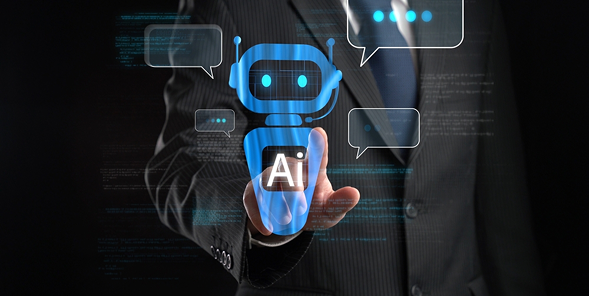
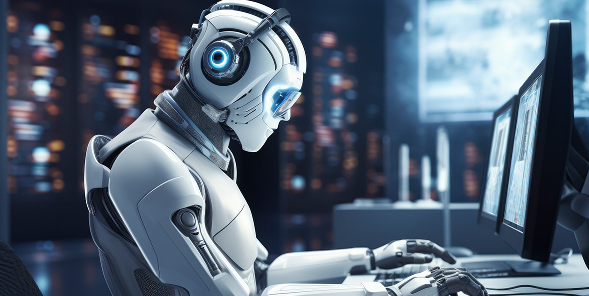

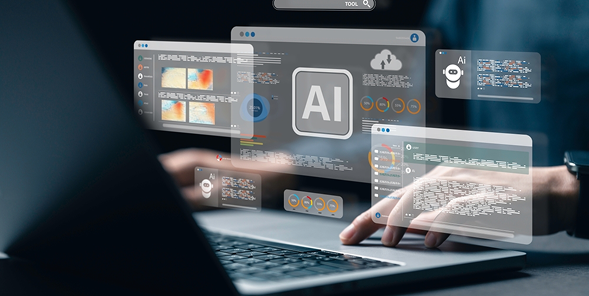

 SaaS Development
SaaS Development Web Application Development
Web Application Development Mobile Application Development
Mobile Application Development Custom Software Development
Custom Software Development Cloud Development
Cloud Development DevOps Development
DevOps Development MVP Development
MVP Development Digital Product Development
Digital Product Development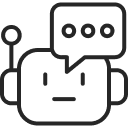 Hire Chatbot Developers
Hire Chatbot Developers Hire Python Developers
Hire Python Developers Hire Django Developers
Hire Django Developers Hire ReactJS Developers
Hire ReactJS Developers Hire AngularJS Developers
Hire AngularJS Developers Hire VueJS Developers
Hire VueJS Developers Hire Full Stack Developers
Hire Full Stack Developers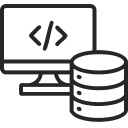 Hire Back End Developers
Hire Back End Developers Hire Front End Developers
Hire Front End Developers AI Healthcare Software Development & Consulting
AI Healthcare Software Development & Consulting Healthcare App Development
Healthcare App Development EHR Software Development
EHR Software Development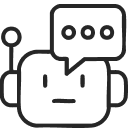 Healthcare AI Chatbot Development
Healthcare AI Chatbot Development Telemedicine App Development Company
Telemedicine App Development Company Medical Billing Software Development
Medical Billing Software Development Fitness App Development
Fitness App Development RPM Software Development
RPM Software Development Medicine Delivery App Development
Medicine Delivery App Development Medical Device Software Development
Medical Device Software Development Patient Engagement Software Solutions
Patient Engagement Software Solutions Mental Health App Development
Mental Health App Development Healthcare IT Consulting
Healthcare IT Consulting Healthcare CRM Software Development
Healthcare CRM Software Development Healthcare IT Managed Services
Healthcare IT Managed Services Healthcare Software Testing services
Healthcare Software Testing services Medical Practice Management Software
Medical Practice Management Software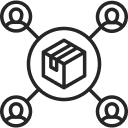 Outsourcing Healthcare IT Services
Outsourcing Healthcare IT Services IoT Solutions for Healthcare
IoT Solutions for Healthcare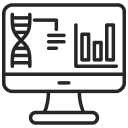 Medical Image Analysis Software Development Services
Medical Image Analysis Software Development Services Lending Software Development Services
Lending Software Development Services Payment Gateway Software Development
Payment Gateway Software Development Accounting Software Development
Accounting Software Development AI-Driven Banking App Development
AI-Driven Banking App Development Insurance Software Development
Insurance Software Development Finance Software Development
Finance Software Development Loan Management Software Development
Loan Management Software Development Decentralized Finance Development Services
Decentralized Finance Development Services eWallet App Development
eWallet App Development Payment App Development
Payment App Development Money Transfer App Development
Money Transfer App Development Mortgage Software Development
Mortgage Software Development Insurance Fraud Detection Software Development
Insurance Fraud Detection Software Development Wealth Management Software Development
Wealth Management Software Development Cryptocurrency Exchange Platform Development
Cryptocurrency Exchange Platform Development Neobank App Development
Neobank App Development Stock Trading App Development
Stock Trading App Development AML software Development
AML software Development Web3 Wallet Development
Web3 Wallet Development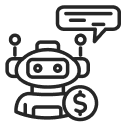 Robo-Advisor App Development
Robo-Advisor App Development Supply Chain Management Software Development
Supply Chain Management Software Development Fleet Management Software Development
Fleet Management Software Development Warehouse Management Software Development
Warehouse Management Software Development LMS Development
LMS Development Education App Development
Education App Development Inventory Management Software Development
Inventory Management Software Development Property Management Software Development
Property Management Software Development Real Estate CRM Software Development
Real Estate CRM Software Development Real Estate Document Management Software
Real Estate Document Management Software Construction App Development
Construction App Development Construction ERP Software Development
Construction ERP Software Development





